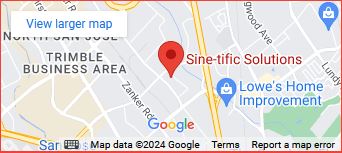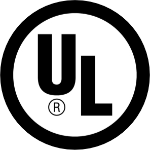Embossing vs. Engraving
Permanent marking processes enable the creation of lasting impressions in various materials, distinguishing products for safety and identification. Embossing uses custom dies to press and produce permanent indentations, leaving an upwardly raised design in the material with easily readable characters, even from a distance. On the other hand, engraving uses a tool or laser to cut designs, carving into the material for clear, easy-to-read solutions with increased durability.
At Sine-tific Solutions, we offer engraving and embossed die-making services for high-quality identification solutions tailored to meet your specific application requirements. Understand the differences between embossing and engraving to find the ideal solution for your needs.
Advantages of Embossing
Embossing creates a raised design or texture, offering many operational and aesthetic benefits. It can be used to highlight specific design elements, making them more noticeable and engaging for a range of applications. Providing longevity for products that are handled often, embossing has advantages, such as:
- Interactive, high-quality feel
- Enhanced aesthetics with depth and texture
- Premium look with visual contrast and clarity
- Durable, as the raised texture is more resistant to wear
- Versatile for a range of applications
Advantages of Engraving
Engraving involves cutting or etching designs into the surface of a material. It offers a range of benefits through its ability to create intricate and complex designs with high accuracy, providing a precise and permanent solution for completely customizable, long-lasting marks. This process delivers various advantages for identification applications and other uses, including:
- Highly detailed, precision designs
- Durability through permanent, deep marking
- Refined and professional appearance
- Versatile for use with many materials
- Clear contrast for branding and identification
When to Choose Embossing or Engraving for Legible Text
Choosing between embossing and engraving offers distinct benefits, depending on the desired outcome of your project. Embossing is best suited for large, bold designs, creating a raised and tactile texture that is ideal for less detailed patterns, shapes, and text that don’t require fine precision. It is commonly used with lightweight materials, with set-up costs spread between the items in the manufacturing run, providing a cost-effective solution for mass production.
Alternatively, engraving is ideal for highly detailed designs that feature fine lines, intricate patterns, or small text, producing a level of detail that embossing cannot match. It is a permanent process with long-lasting marks that is best suited for hard materials, such as metals, offering exceptional customization and personalization for branding and identification. This process creates high-contrast, detailed markings, primarily used in applications for the aerospace, semiconductor, and military and defense industries.
Factors that Affect the Price of Embossing or Engraving
Depending on your requirements for a permanent marking process, embossing or engraving might be the more cost-effective solution. Generally, the embossing process is less expensive as it requires less specialized machinery to create the desired effect. Alternatively, engraving can achieve more intricate, highly permanent, and more precise marking for a long-lasting, high-quality solution. Their prices can vary significantly based on various factors, which include:
- Material type and thickness
- Design complexity, detail, and size
- Quantity and level of customization per unit
- Tooling, order size, and design intricacy
Materials for High-Precision Engraving
Carving or etching designs, text, or patterns with engraving can be achieved with many different materials. The right material choice for your application depends on the method of engraving, the application's use, customized effects, and the equipment being used. Engraving can utilize the following materials:
- Acrylics and plastics
- Metals like stainless steel, brass, copper, and aluminum
- Stone, wood, and ceramics
- Rubber
Materials for Embossing Applications
As a process of creating raised or recessed designs, embossing can utilize various materials. To create your desired effect, the right material should be selected based on the intended application, the level of detail required, and the specialized equipment being used. Embossing is compatible with materials such as:
- Plastics, like PVC, PET, and acrylic
- Leather
- Wood and cardboard
- Metals, including aluminum or brass
- Rubber




